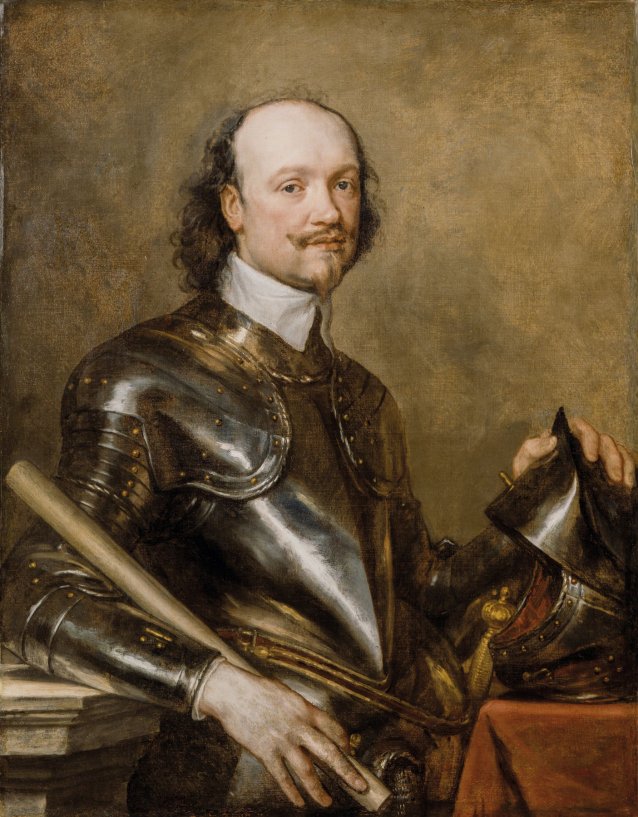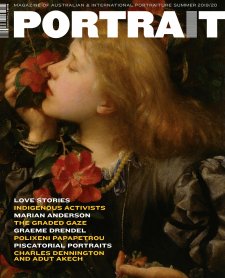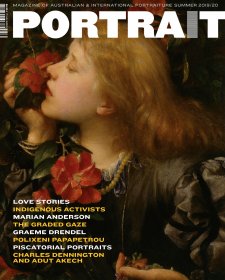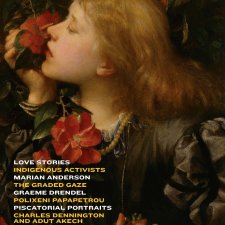Portraiture, right from its beginnings, has always been thought of as a way of cheating death. If mythology is to be believed, the genre originated in ancient Greece, when a young woman, referred to as the ‘Corinthian maid’, traced the shadow cast by her beloved’s profile onto a wall of the room where he was sleeping. He was due to depart the next day on a journey from which he mightn’t return. The girl’s father, a potter, used the outline drawn on the wall to create a relief profile in clay, thereby supposedly giving rise not only to portraiture but to the tempting notion that a tangible, durable record of a loved one’s face could serve as a potent relic in times when that person might be distant, unattainable or even dead. Fancy someone, or lusting after them? Get a portrait, maybe a miniature that you can wear against your skin and kiss in secret when the inclination takes you. Yearning for a lost or absent lover? A picture of them will help soothe one’s sadness, or supply an aide memoire for the indulgence of unsatisfied desires. Mourning a much-loved and perhaps prematurely-taken partner? A portrait can serve as a stand-in or memorial, a memento of the looks, qualities and characteristics that had made you love the subject so in the first place. This inextricability of love, longing and loss from portraiture is one of the concepts underpinning Love Stories, a cracking exhibition of 120 portraits from the collection of the National Portrait Gallery, London, that will travel to Canberra in winter 2020. At the exhibition’s heart is a lush, elegiac painting by Sir Antony van Dyck depicting Venetia, Lady Digby, whose untimely death in 1633 gave rise to portraits that are emblematic of the relationship between portraiture, desire and death.
The Oxford Dictionary of National Biography classifies Venetia, Lady Digby (née Stanley, 1600–1633), as a ‘gentlewoman and celebrated beauty’ – two of the very few rules by which seventeenth-century women might qualify as suitable subjects for portraits. A great-granddaughter, on her father’s side, of the Earl of Derby and the granddaughter of the Earl of Northumberland on her mother’s, Venetia was an infant when her mother died and as a result she was sent away to be raised by a family in Buckinghamshire. There she befriended Kenelm Digby (1603–1665), a diplomat, courtier to King Charles I, and a noted polymath and eccentric. Digby was interested in matters such as astrology and alchemy, was a founding member of the Royal Society, and authored various philosophical, scientific, poetic and biographical texts. It is said that he formed a strong attachment to Venetia in his youth, she reportedly being as young as thirteen when her beauty began to ‘draw the eyes and thoughts of all men to admiration’. Her reputation, however, was later impugned accordingly. The introduction to an 1827 edition of The Private Memoirs of Sir Kenelm Digby, for example, relates gossip of intrigues, assignations, illegitimate children and a suitor who ‘had her portrait painted … which picture he used to shew as a glorious trophy of her conquered affections’. Kenelm was seventeen when his mother – who had a more lucrative and untarnished prospective daughter-in-law in mind – dispatched him on the usual Grand Tour of Europe in the hope that this might dampen or redirect his ardour. The ruse failed. Kenelm’s love for Venetia instead ‘served as an impregnable bulwark to his virtue’ (he is held to have circulated rumours of his own death so as to evade the ‘overtures’ of the French queen mother, Marie de Medici); and though returning home to hearsay about the liaisons Venetia had partaken of in his absence – and because she believed he was dead – the pair reconnected and married, against both their families’ wishes, around 1625. They concealed the union for three years and kept the birth of their first child a secret also.















